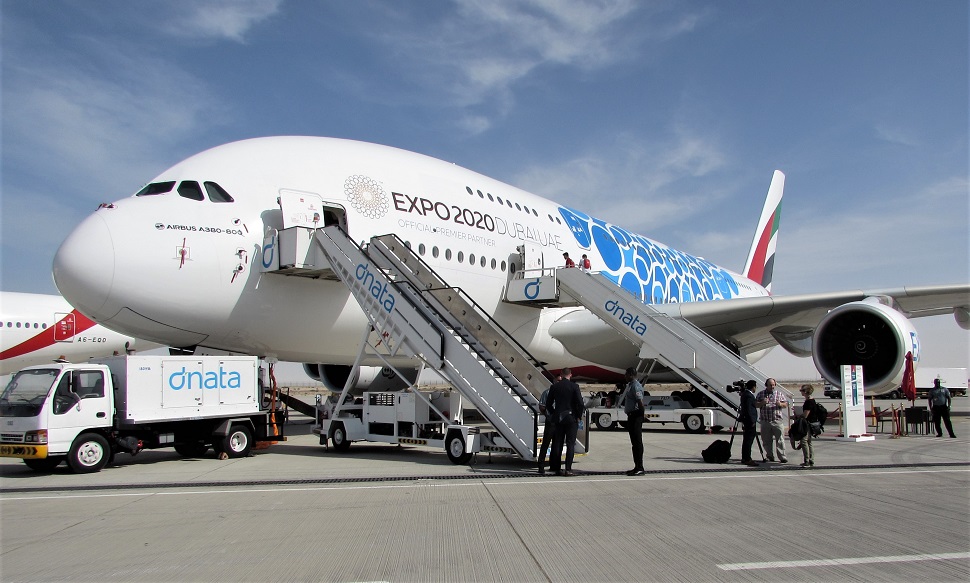Airbus expects over two-fifths of today’s Middle East airliner fleet to be replaced over the next 20 years but has no answer for A380 operators needing a successor to the super-jumbo for slot-restricted markets.
Airbus expects over two-fifths of today’s Middle East airliner fleet to be replaced over the next 20 years but has no answer for A380 operators needing a successor to the super-jumbo for slot-restricted markets.
Senior vice-president business analysis and market forecast Bob Lange says the airframer’s latest global market outlook estimates demand from the Middle East for 3,200 new airliners through 2038.
The forecast shows that there are currently 1,285 airliners in service, of which 1,090 will be replaced by new aircraft. An additional 2,110 deliveries are forecast for growth which will increase the fleet to 3,395 aircraft in 20 years.

One of Emirates’ 112 A380s is on static display at the Dubai air show
Max Kingsley-Jones/FlightGlobal
There are 132 A380s operating with three carriers in the region – Emirates with 112 and Qatar Airways and Etihad Airways with 10 each. Emirates is to take an additional 11 A380s through 2021.
When A380 production ends in 2021, the largest aircraft in Airbus’s inventory will be the 350-410-seat A350-1000. Boeing’s largest passenger aircraft is the 777-9, which can seat up to 426 passengers.
Lange says that despite Airbus’s decision to close the A380 programme in 2021, it still forecasts a requirement for aircraft in the super-jumbo’s category after production ends.
“We do see demand for large aircraft in the world and in the Middle East. And that demand could support A380-sized aircraft. However, the question is how much and what level of technology, and at what time?”
Speaking to FlightGlobal earlier this year, Emirates Airline president Tim Clark said the airline would face the quandary about how it replaces its A380 at slot-constrained airports: “There are certain routes on our network where we have for instance six A380s a day running at 92%, each carrying 515 people,” he says.
“So where do we go after that? One of our concerns is that when the A380 goes and we’re still stuck with six slots, we’ll have to put a 777-9 on the route, but it’s going to be 130 seats lighter in terms of capacity.”
Lange expects that the A380 will remain the “backbone” of the air transport industry after production ceases, “for pretty much the whole of that 20-year [forecast] period”.
However, Lange says Airbus currently has no A380 succession plan where operators are forced to use high-capacity aircraft in the face of airport slot restrictions: “In terms of the demand for other large aircraft later, we need to see how that falls as it’s not currently part of our plans, because we see a growth for smaller aircraft replacing larger aircraft where slots are not restricted.”



















